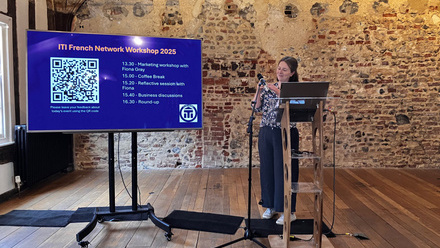5 ways to maximise your translation budget
Translating your content is one of the easiest and most powerful ways to open up international markets but how do you ensure you get the most from your budget?
This article was first published in 22 July 2022 with amendments and updates made 2 April 2025
With the rise of AI translation tools, many assume that translation is now instant and low-cost. But while AI can be useful, particularly for getting the gist of a text, professional translation remains essential for accuracy, nuance, and effective communication. Here, Paul Kearns explains steps you can take to ensure your budget stretches as far as possible while still achieving professional results.
Small and medium sized businesses often face a dilemma. On the one hand they want to expand into foreign markets, sell their goods and services, and reap the rewards in terms of growth and increased profits. On the other hand, they don’t always factor in the cost of translation, and it can be an eye-opener when they realise the amount of work involved and the subsequent cost.
Is there any way of reducing the financial burden?
Firstly, it’s worth making the point that translation is a professional service. A business pays for accountancy or payroll services, website design and maintenance, insurance, or cleaning services. Translation services are no different and are a legitimate business expense in exchange for a professional service.
Secondly, when a business buys professional services, it is buying more than time. You don’t just pay your accountant for their time but also for their expertise, their knowledge and experience. You expect your accountant to highlight where you’re going wrong and give you solid advice on how to improve the running of your business, how to best finance a new project or take advantage of tax breaks etc.
Similarly with a professional translator, you’re paying for their language skills, their writing ability, their intercultural communication skills, their knowledge of your industry and your target market's language and culture. In short you’re paying for a linguistic and cultural expert.
You’d be horrified at the thought of haggling with your accountant to provide their services ‘on the cheap’ so don’t think that translators are any different.
So bearing all this in mind, how can you maximise your translation budget and still achieve your goals? Here are my five top tips:
1. Create your content with translation in mind
This means writing in plain English, keeping sentences short, organising the information in a logical manner, keeping jargon to an absolute minimum, and avoiding idioms. If you have employees who aren’t native speakers of English, ask them to read the content - do they understand it? What questions do they have?
2. ‘Please find attached an updated file for translation.’
This one is so important. Make sure your content is 100% complete before you send it to the translator. Some companies are in such a rush to get their content translated that they are continually sending the translator an updated file because the previous file was incomplete. Or they decide to add some extra content. Or they realised that something was wrong.
This wastes a huge amount of time, often means duplicating work, and can even result in the wrong content being translated. Getting the content right before you send it to your translator saves both time and money.
3. Proofread, proofread, then proofread again
It’s surprising how many times a translator receives a text for translation, only to find that it contains spelling errors, incomplete sentences, inconsistent numbering, references to tables that are missing, and so on. These all take time to fix, and that pushes up the cost of the translation. Careful proofreading eliminates these issues and makes it easier for the translator to concentrate on getting the translation right.
4. Consider your deadlines
If you've followed suggestion 1 you will have the insight to factor translation into your project management plan. Translation deadlines really do need to be included in your project management.
This is because it takes time to get the content translation-ready, translate it, review it, format it and publish it. Sure, translators can cope with the odd ‘urgent request’. But if the ‘urgent request’ is the rule rather than the exception you’re in trouble.
Shorter than necessary timelines impact the quality of the translation and often incur extra costs when it means translators have to work evenings or weekends to meet your deadline.
In over 10 years working as part of in-house translation teams, I can count the number of truly urgent requests on one hand. All the other urgent requests were either due to bad project management or no project management.
5. Create a project brief
Every business has a unique perspective on their role in the world with its own unique culture, tone of voice and internal language. This needs to be conveyed in the translation so that translated materials align with your core business values and products.
In most cases, the translator isn’t part of your particular business environment so, you need to let them know what that perspective is by giving them enough information to do their job well.
This means creating a translation brief - What’s the purpose of the translation? (Information, research, marketing?) Who is the audience? (Internal staff, suppliers, sales teams, the public?) How will the information be shared? (Online, in print, as a white paper, marketing materials?)
It also helps if you have them, to provide the translator with your company style guide, brand guidelines or any other reference material that might be useful.
These 5 suggestions will help keep costs to a minimum by improving the planning process and removing common obstacle which push up costs. They won’t eliminate costs entirely but they will help make your budget go further.






